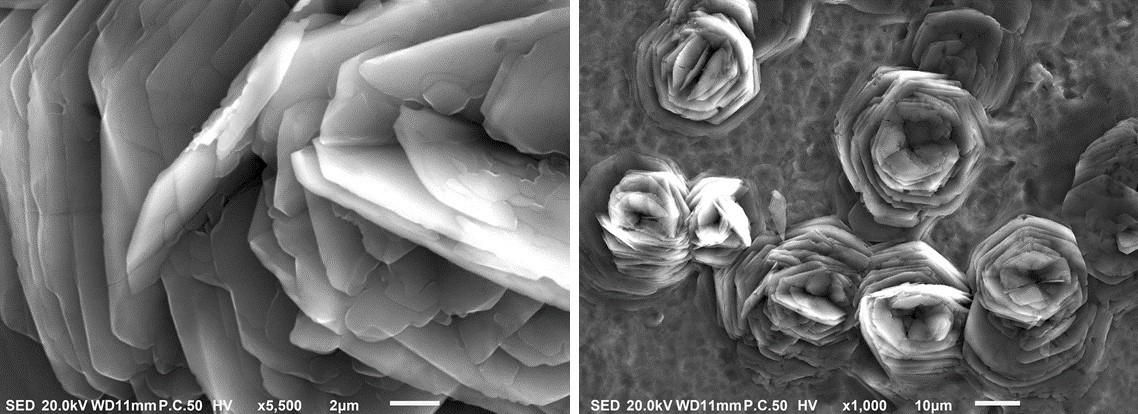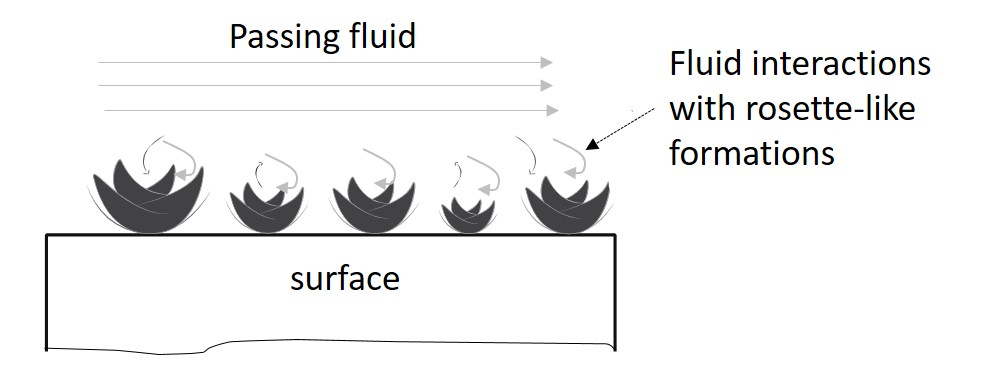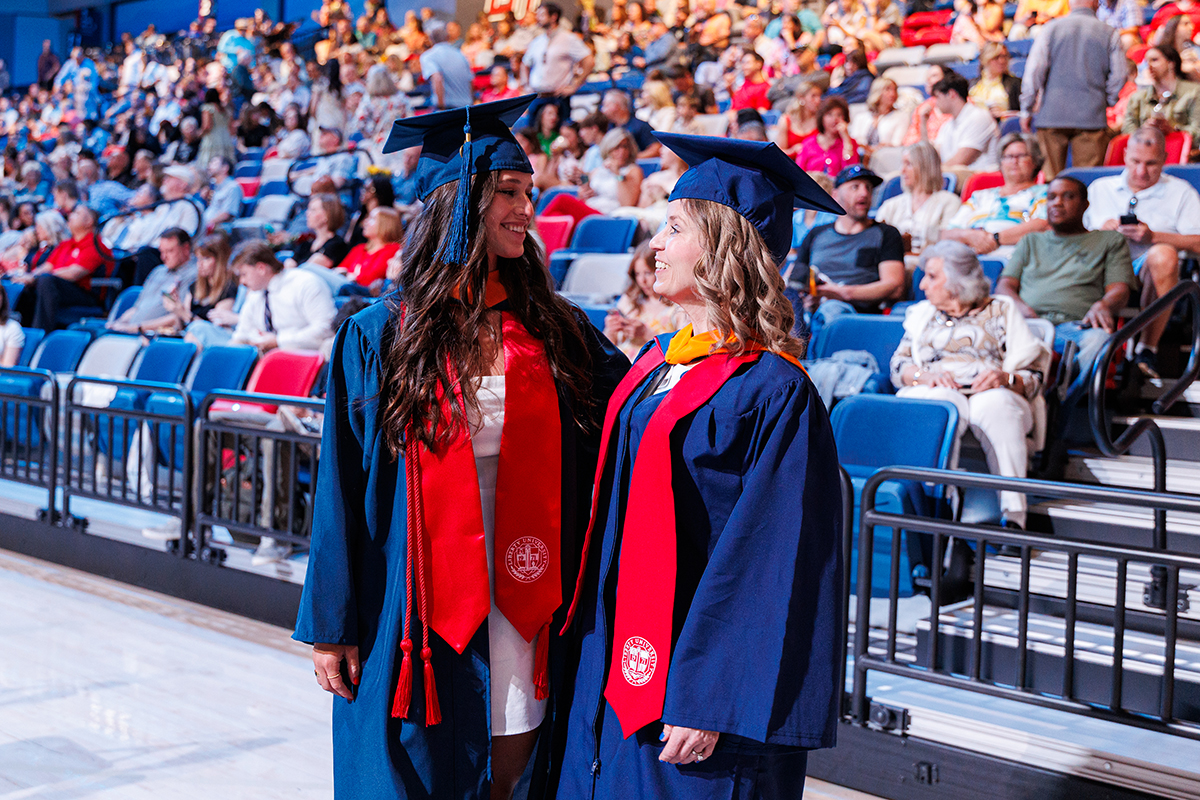Search News Archives
Filter News Articles
Additional Navigation
Liberty University researchers discover microscopic, rose-like crystals that could lead to various applications
September 30, 2020 : By Office of Communications & Public Engagement

Dr. Hector Medina, professor of mechanical engineering at Liberty University, and his research team recently made an awe-inspiring and beautiful discovery while viewing the results of their study on using acids to create rough surfaces on the metal titanium for use with dental implants.
“Our research was aimed at optimizing the way that dental implants bind with human bone,” said Medina, who explained that a titanium screw is commonly used to attach an artificial tooth. “By using acids to etch metals — like titanium — we are able to create a rough surface on the titanium which helps bone cells attach to the dental implant.”
When the team used sulfuric acid on the surface, the chemical reaction formed rose-like crystalline structures visible under a microscope at 1,000 times smaller than the diameter of a single human hair.
Rachel Kohler, who is now pursuing a Ph.D. at Purdue University, was an undergraduate student at the time of the research and assisted Dr. Medina in the experiments that led to the discovery.

“The formations we discovered resemble roses, and, interestingly enough, the first time we saw the rosettes was on February 14 — Valentine’s Day,” recalled Medina.
Previous research has proven that acid etching as well as other surface modification techniques are most effective if they could create prescribed surface features with different sizes, especially at the microscopic level, in a highly controlled manner.
“These rosettes were formed on the surface of the etched titanium and, just like roses, they essentially grew,” Medina said.
But because of the difficulty of consistently replicating the same rough surfaces, Medina and his team were attempting to create a mathematical equation (similar to the results of this research paper) to guide this process when they made the discovery.
Medina said the research process involved etching the titanium in Liberty’s chemistry lab and then sending it to a scanning electron microscope at Liberty’s Center for Engineering Research & Education (CERE).
Because the team was the first to discover these rosettes, Medina and Kohler authored a peer review research paper, and in a nod to the impact of their findings, their research was recently featured in Advanced Science News magazine.
“Having our research featured in Advanced Science News not only adds credibility to our research, this also adds more publicity to the work and its implications,” said Medina. “It is an honor to have our research and Liberty’s work featured in such a reputable publication in the science world.”
Medina said the implications of the research are far-reaching and still being examined. In addition to applications for dental implants, enhancements in fluid-surface interaction — liquid flowing over rough surface structures like the rosettes — can be used in water purification since the unique shape of the rosettes could enhance the removal of some contaminants.

But as unique as the titanium rosettes are to the science community, Medina does not seem surprised by the findings.
“If you think about it, God leaves a footprint in everything He does. You see the signature of the Creator in multiple things because of the similar mechanisms that are embedded in creation by the Creator,” he said. “This is yet another example of that.”


